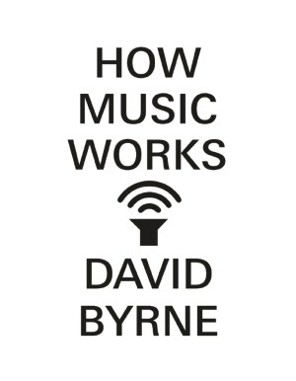Posted by: Keith Meatto on: September 24, 2012

David Byrne, How Music Works
David Byrne?s new manifesto slash memoir, How Music Works, has been written many times before. Ethnomusicologists and philosophers, from Theodor Adorno to Walter Benjamin to David Suisman, have chronicled the historical shift from classical to popular music, lamenting it, praising it, and/or evaluating the societal changes brought about by it and its corresponding technology. Byrne?s book, which illustrates the history of analog and digital recording, narrates the advent of the music industry, and claims to describe how to create a music scene or subculture offers almost nothing new. One could learn a similar amount about modern musical historical shifts through a single listen of LCD Soundsystem?s ?Losing My Edge.? So what gives David Byrne the right to write?
For starters, there?s his legacy as the leader of Talking Heads, a band that actively spearheaded new musical trends, fusing genres and synthesizing the past and the present. While Byrne, who turned 60 this spring, is now decades removed from his Heads days, How Music Works taps into how older musical figures can remain culturally relevant instead of retreating to writing the ?aging rocker biography.? Through attending and analyzing Tune-Yards shows, collaborating with Dirty Projectors on Dark Was The Night, a charity compilation showcasing the who?s who of indie rock circa 2009, and, most recently, releasing the collaborative album Love This Giant with singer/songwriter Annie Clark a.k.a. St. Vincent, Byrne has stayed in the public eye.
Yet, although Byrne stays visible through collaborations, whether the music produced through these collaborations offers anything new is a different story. Byrne, in reference to the popularization of sampling in Remain in Light and Bush of Ghosts, spends a lot of time in How Music Works writing about contemporary sampling and the phenomenon of song lyrics as cultural reference points creeping into everyday dialogue (i.e. Beyonce?s ?put a ring on it?). He connects this trend to live acts that are more visual icons than live performers, like Lady Gaga. Yet, is Byrne a victim of his own accusation? In the book, he chides Pitchfork for saying that he would collaborate with anyone for a bag of Doritos, claiming to be extremely picky about with whom he works. Byrne?s claim is believable, but the extent to which he is the same musical game changer he was years ago is questionable at best. In other words, Byrne seems to be simply exhibiting the visual image of ?hip? or ?indie.?
How Music Works functions best as a ?Where do we go from here?? piece. In the final chapter of the book, Byrne asserts that future generations will look at today?s governments slashing arts budgets in bewilderment. The current movement to bridge the gap between arts and sciences is based on studies that suggest that arts education fosters creativity and improves observational skills across all fields. Byrne implicitly suggests that innovative popular music could improve the world in the same way Adorno described how challenging classical music fostered self-improvement. Perhaps now more than ever the music world needs Byrne to return to innovation. Society could look to a technologically and musically ahead-of-the-game figure like Byrne for guidance, so future generations do not look back on today and say ?same as it ever was.?
Jordan Mainzer is a student at Brown University studying History and Hispanic Studies. He is the editor of art, architecture, and design blog DRA and was recently featured on the blog One Week One Band writing about St. Vincent. He was also the film critic for Vail, CO tourist magazine KidStuff at age 6, which perhaps remains his greatest accomplishment.
Source: http://frontpsych.com/2012/09/24/david-byrne-how-music-works/
freedom riders 9th circuit court of appeals gisele bundchen tom brady randy travis arrested dickens greg kelly cujo
No comments:
Post a Comment
Note: Only a member of this blog may post a comment.